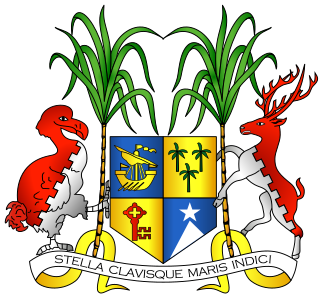This article needs additional citations for verification .(September 2008) (Learn how and when to remove this template message) |
Associate Justice or Associate Judge is the title for a member of a judicial panel who is not the Chief Justice in some jurisdictions. The title "Associate Justice" is used for members of the Supreme Court of the United States and some state supreme courts, and for some other courts in Commonwealth countries, as well as for members of the Supreme Court of the Federated States of Micronesia, a former United States Trust Territory. [1] In other common law jurisdictions, the equivalent position is called "Puisne Justice".

The Supreme Court of the United States is the highest court in the federal judiciary of the United States. Established pursuant to Article III of the U.S. Constitution in 1789, it has original jurisdiction over a small range of cases, such as suits between two or more states, and those involving ambassadors. It also has ultimate appellate jurisdiction over all federal court and state court cases that involve a point of federal constitutional or statutory law. The Court has the power of judicial review, the ability to invalidate a statute for violating a provision of the Constitution or an executive act for being unlawful. However, it may act only within the context of a case in an area of law over which it has jurisdiction. The Court may decide cases having political overtones, but it has ruled that it does not have power to decide nonjusticiable political questions. Each year it agrees to hear about 100–150 of the more than 7,000 cases that it is asked to review.
In the United States, a state supreme court is the ultimate judicial tribunal in the court system of a particular state. On matters of state law, the decisions of a state supreme court are considered final and binding on state and even United States federal courts.
In the United States, judicial panels are non-hierarchical, so an Associate Judge has the same responsibilities with respect to cases as the Chief Judge.
An Associate Judge usually has fewer or different administrative responsibilities than the Chief. On the Supreme Court of the United States, the most junior Associate Justice (currently Justice Neil Gorsuch), has the task of answering the door when the Justices are in private conference.[ citation needed ]

Neil McGill Gorsuch is an Associate Justice of the Supreme Court of the United States. He was nominated by President Donald Trump to succeed Antonin Scalia and took the oath of office on April 10, 2017.
There are eight Associate Justices on the United States Supreme Court, and three Associate Justices on the Supreme Court of the Federated States of Micronesia. [2]
The function of Associate Justices vary depending on the Court they preside in. In New South Wales Associate Justices of the New South Wales Supreme Court hear civil trials and appeals from lower courts amongst other matters [3] . Associate Justices can sit either as a single judge or may sit on the New South Wales Court of Appeal. [4] . In New Zealand Associate Judges of the High Court of New Zealand supervise preliminary processes in most civil proceedings. Associate Judges have jurisdiction to deal with such matters as: summary judgment applications, company liquidations, bankruptcy proceedings, and some other types of civil proceedings. [5] In the New Zealand legal system, Associate Judges were formerly known as Masters.

New South Wales is a state on the east coast of Australia. It borders Queensland to the north, Victoria to the south, and South Australia to the west. Its coast borders the Tasman Sea to the east. The Australian Capital Territory is an enclave within the state. New South Wales' state capital is Sydney, which is also Australia's most populous city. In March 2018, the population of New South Wales was over 7.9 million, making it Australia's most populous state. Just under two-thirds of the state's population, 5.1 million, live in the Greater Sydney area. Inhabitants of New South Wales are referred to as New South Welshmen.

The New South Wales Court of Appeal, part of the Supreme Court of New South Wales, is the highest court for civil matters and has appellate jurisdiction in the Australian state of New South Wales.

New Zealand is a sovereign island country in the southwestern Pacific Ocean. The country geographically comprises two main landmasses—the North Island, and the South Island —and around 600 smaller islands. New Zealand is situated some 2,000 kilometres (1,200 mi) east of Australia across the Tasman Sea and roughly 1,000 kilometres (600 mi) south of the Pacific island areas of New Caledonia, Fiji, and Tonga. Because of its remoteness, it was one of the last lands to be settled by humans. During its long period of isolation, New Zealand developed a distinct biodiversity of animal, fungal, and plant life. The country's varied topography and its sharp mountain peaks, such as the Southern Alps, owe much to the tectonic uplift of land and volcanic eruptions. New Zealand's capital city is Wellington, while its most populous city is Auckland.









